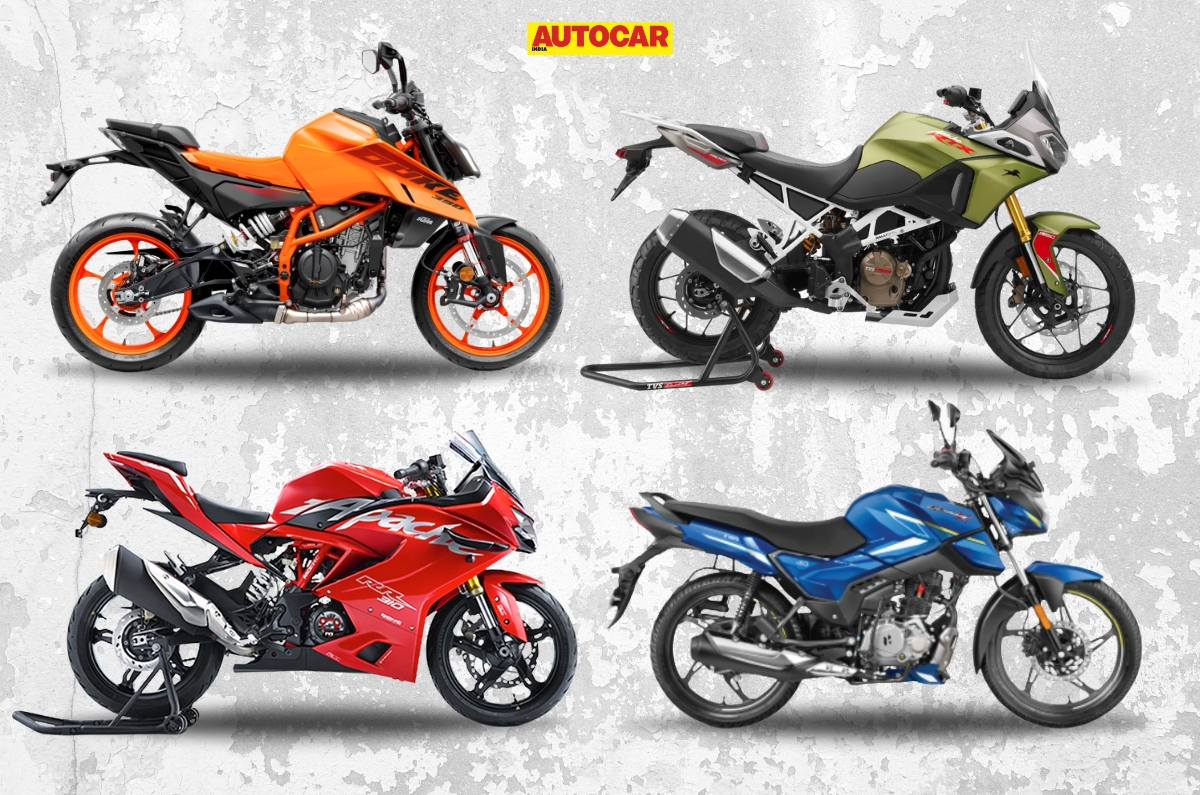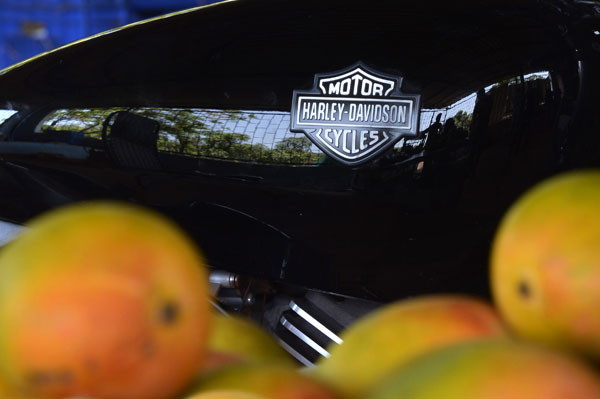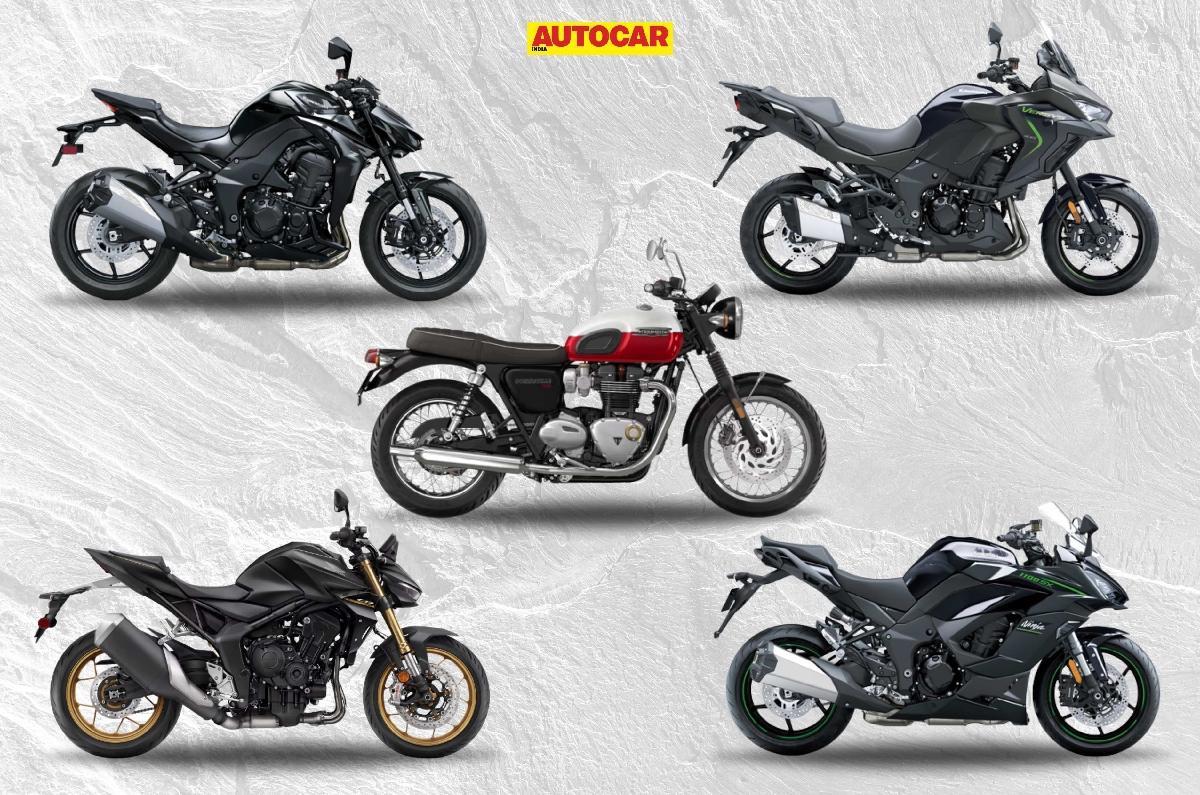Race bikes are magnificent creatures. They’re heavily focused machines with the sole intention of going as fast as possible around a racetrack. But the process of building them usually involves high-quality components like top-shelf suspension, brakes and lightweight parts. This kind of kit can be frightfully expensive, often collectively costing well over the buying price of the stock motorcycle – especially in the case of smaller machines.
But this RC 390 is different. Built by Bengaluru-based Atomic Motorsports, it has no exotic parts or extreme engine tuning. Nevertheless, in the hands of the team’s talented young rider, Sachin Chaudhary, the bike set a new circuit record around the Kari Motor Speedway of 1:11.444s in the Formula Junior Racing Series (FJRS). You can imagine my excitement when the opportunity to ride this fantastic machine presented itself when I joined Atomic Motorsports for one of their riding schools at the same track.
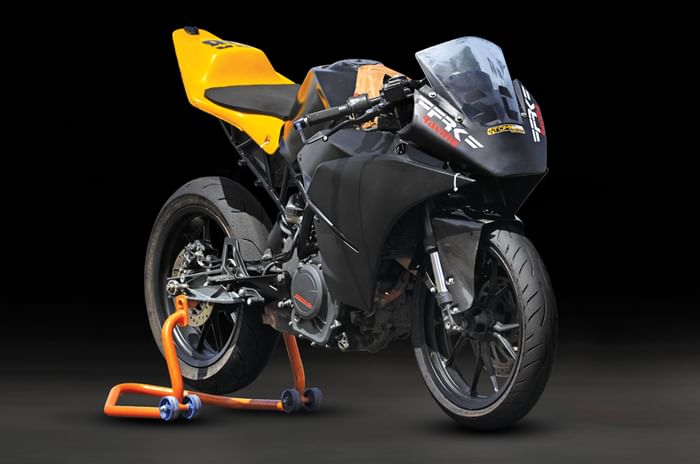
I started off with a stock RC 390 – which was perfect, because it clearly highlighted the vast differences between the road and race bike. Accelerating down the straightway from the pit lane exit, the race bike’s angry motor felt familiar, but a little more energetic thanks to a mild ECU tune and a large 47-tooth sprocket at the back. The standard size is 45 and this larger sprocket brings the advantage of stronger acceleration at the slight expense of top speed – a trade-off that works on a track like Kari.
From the moment the bike tipped into the first corner, the difference was clear; eye-opening, even. It almost felt like a different motorcycle, one that turned in faster, with noticeably less effort, and carried higher corner speeds with the same rider inputs. And that’s saying something because a stock RC 390 is no slouch; but this bike makes it feel (and I can’t believe I’m saying this) a little fat and lethargic!
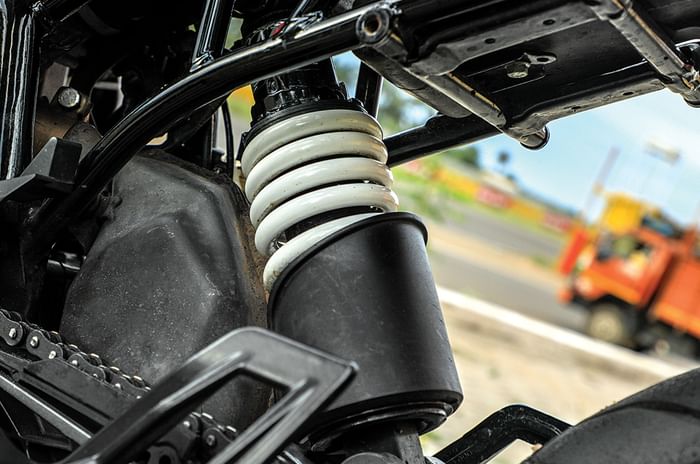
The reason behind this transformation is largely down to one factor – weight, or the lack of it. The standard pre-2017 RC 390 that this bike is based on weighs a little under 170kg when fully fuelled. But the last time Siddhanth Koundinya, the founder of Atomic, weighed the race bike, it tipped the scales at 142kg with a decent amount of fuel in it. We’re talking a weight saving of well over 20kg and a bike that now weighs just 3kg more than a stock R15 V 3.0.
So, how do you shed so much weight? Well, for starters, the stock bike is stripped of anything that’s unnecessary on the track. This includes the lights, rear mudguard, pillion footrests, mirrors and more. Then, the stock bodywork is replaced by a lightweight and mean-looking fibreglass kit from FRK racing. It becomes obvious that this is a pure, no-frills racer when even the basic luxury of a seat is replaced by a thin pad of foam for a more intimate connect to what the bike’s doing.
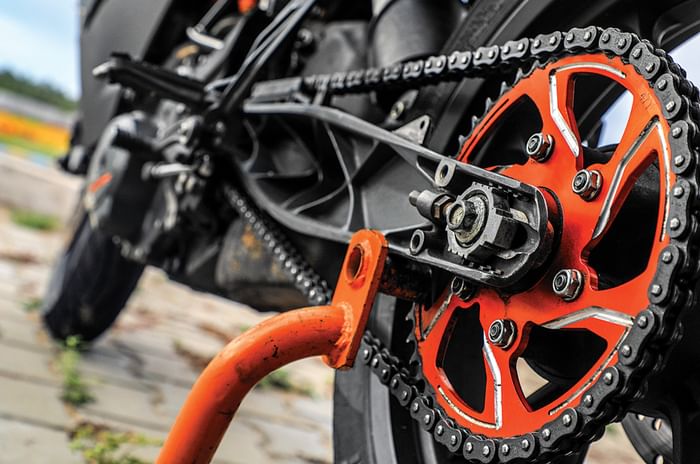
In terms of ergos, the standard clip-ons have been replaced and the new ones are narrower, but not much lower. I found that this too generated a more connected feel to the bike, something that’s always good when you’re trying to go as fast as possible. As for the foot pegs, Sachin finds that the stock one’s position works fine for him, so these remain.
Further enhancing the bike’s agility is the tyre choice. After much experimentation, the Atomic team discovered that a 110-section W-rated Metzeler M5 front tyre worked well, but they preferred a slimmer, 140-section Pirelli Diablo Rosso II tyre at the rear. Of course, this doesn’t matter anymore for the races, because the Pro-Stock 300-400c category of the FMSCI national championship has recently moved to MRF slick tyres, which have dropped the lap times by over 2.0sec.
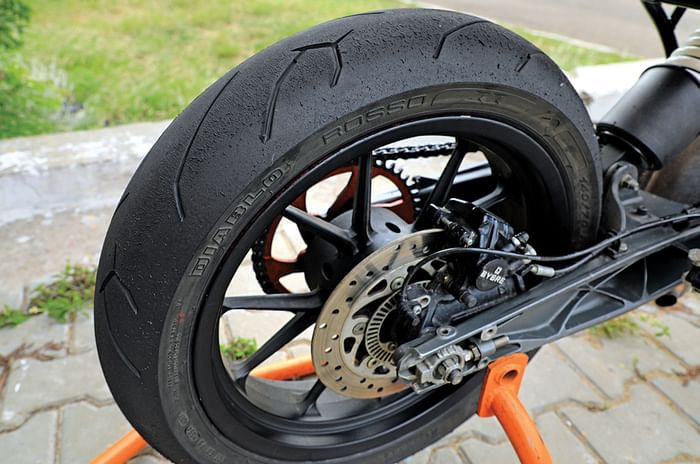
As already mentioned, modifications to the engine are quite mild, and are limited to a K&N air filter and an ECU reflash. A performance exhaust will also be added on soon. Everything else is stock, but Sachin prefers a race shift pattern, so the lever now goes up for a downshift and down for upshifts. As far as the suspension goes, the stock fork has been retained but it runs a heavier weight oil (10w vs 5w in the stock bike). Team Atomic also found a huge improvement over the squishy previous-gen rear shock by switching over to the unit from 2017 RC 390.
Having ridden both bikes, back-to-back, I absolutely agree. Further benefits from the 2017 bike come in using the new front brake master cylinder that brings stronger and more consistent performance. The team also removed the ABS unit and swapped out the brake hoses to the shorter steel-braided lines from the 200 Duke – less length equals more consistent performance. Aftermarket Brembo brake pads help further increase the bite. And, of course, the lower weight helps immensely.
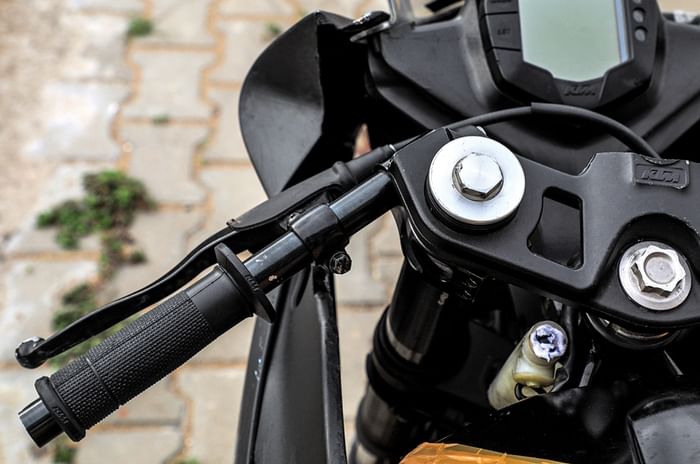
Team Atomic plans to further enhance this motorcycle; it will get more exotic, with the aim of giving it more power and even less weight. But I’m already deeply enamoured by the bike in its present form. For me, a big part of the charm is how a number of seemingly simple and cost-effective mods can come together to create such a dramatic and wonderful effect. So much so that I’m already scheming up ways to build a bike like this for myself!




